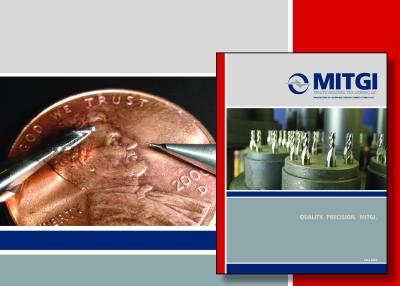
Midwest Industrial Tool Grinding Inc. has released the newest edition of the standard tool catalog. The largest edition published by MITGI, the catalog includes more than 8,700 tools, an increase of 57 percent over the 2015 offering. The expansion includes new product lines, all available in 3 days or less:
· Microdrills and Metric Microdrills
· Reamers and Metric Reamers
· Drafted Mold Tools
· Clearance Cutter Mold Tools
· Tapered Rib Cutter Mold Tools
· Hard Milling Endmills
· Coolant-Through Thread Mills
· Quick-Turn Step Drills
“On-site manufacturing provides us with a distinct advantage in the marketplace,” describes Eric Lipke, MITGI President. “Whether manufacturing standard tools or specials, we’re able to adjust our production schedule to meet the needs of our customers. By adding more standard tool lines, we’re reducing the potential lead time for many of our top selling product categories.”
Contact Details
Related Glossary Terms
- clearance
clearance
Space provided behind a tool’s land or relief to prevent rubbing and subsequent premature deterioration of the tool. See land; relief.
- gang cutting ( milling)
gang cutting ( milling)
Machining with several cutters mounted on a single arbor, generally for simultaneous cutting.
- grinding
grinding
Machining operation in which material is removed from the workpiece by a powered abrasive wheel, stone, belt, paste, sheet, compound, slurry, etc. Takes various forms: surface grinding (creates flat and/or squared surfaces); cylindrical grinding (for external cylindrical and tapered shapes, fillets, undercuts, etc.); centerless grinding; chamfering; thread and form grinding; tool and cutter grinding; offhand grinding; lapping and polishing (grinding with extremely fine grits to create ultrasmooth surfaces); honing; and disc grinding.
- milling
milling
Machining operation in which metal or other material is removed by applying power to a rotating cutter. In vertical milling, the cutting tool is mounted vertically on the spindle. In horizontal milling, the cutting tool is mounted horizontally, either directly on the spindle or on an arbor. Horizontal milling is further broken down into conventional milling, where the cutter rotates opposite the direction of feed, or “up” into the workpiece; and climb milling, where the cutter rotates in the direction of feed, or “down” into the workpiece. Milling operations include plane or surface milling, endmilling, facemilling, angle milling, form milling and profiling.

